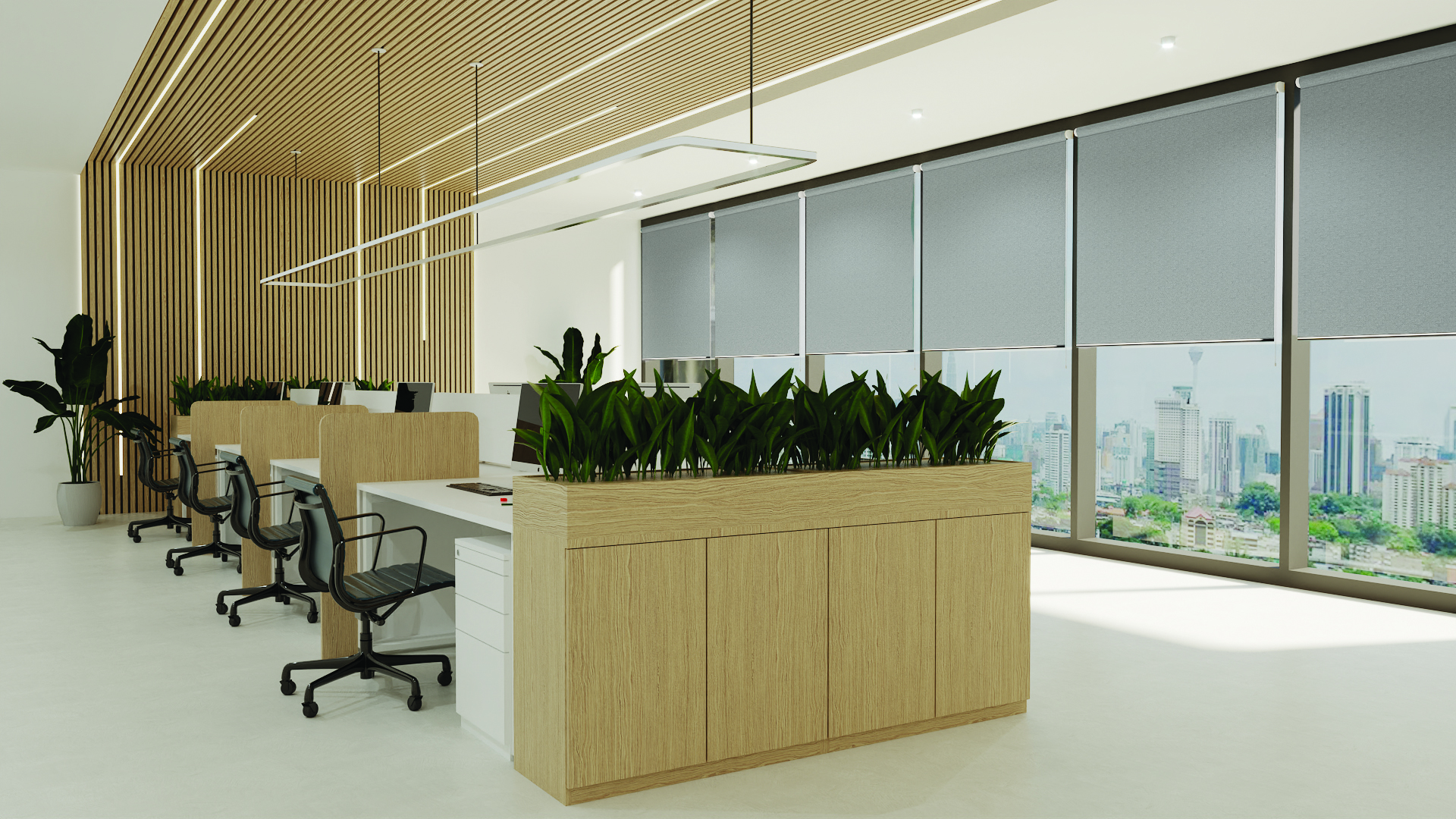Architects and interior designers play a crucial role in creating and improving offices and other workplaces. They tend to focus on design elements that enhance functionality, aesthetics, ergonomics, and sustainability. A range of factors must be considered when creating a modern workplace, including:
1. Space Planning: Architects carefully plan the layout of an office, considering the workflow, departmental interactions, and individual tasks. This ensures efficient use of space and promotes collaboration, while also allowing for privacy when needed. A combination of meeting rooms, fixed working areas, hot desks, and communal areas like kitchens may be required, which is why a detailed brief from the business is essential.
2. Natural Light: Maximising the use of natural light creates a healthier work environment. New offices commonly have large ceiling-to-floor windows to brighten up the interior. This can boost employee productivity, reduce energy consumption, and create a more pleasant ambience. Blinds are the preferred window treatment for workplaces because they look more professional than curtains.
3. Ergonomics: Architects consider the physical comfort of the occupants, selecting furniture and designing spaces that reduce strain and fatigue. Ergonomic design includes adjustable chairs, proper desk heights, and other features that accommodate various body types and working styles. This is an essential step in the design process to ensure employees are comfortable.
4. Technology Integration: Modern offices require seamless integration of technology. Architects must incorporate spaces with built-in provisions for wiring, connectivity, and equipment placement, allowing for a clutter-free and technologically efficient environment.
5. Sustainability: Eco-friendly design principles are increasingly important in office architecture. This may include energy-efficient lighting and thermal blinds, heating and cooling systems, water-saving fixtures, and the use of sustainable materials.
6. Acoustics: Proper acoustic design minimises noise distraction and provides privacy where needed. Sound-absorbing materials and strategic placement of walls and partitions can create an environment conducive to concentration and communication.
7. Aesthetics and Branding: The visual appearance of an office can reflect the company’s brand and culture. Architects work with clients to develop a design that aligns with their identity, using colour, materials, and layout to create a cohesive and appealing environment. Office furniture can be produced in specific brand colours and aesthetic designs, such as modernist Le Corbusier furniture, to support the brand identity. This is particularly important for showrooms that customers visit.
8. Flexibility and Adaptability: As the recent pandemic demonstrated, work needs change over time, and office spaces must be adaptable. This is important for large office blocks where companies pay monthly rent, meaning the tenancy could change hands and a new layout may be needed. Architects often design workspaces that can be easily reconfigured, allowing for changes in team size, project needs, or organisational structure.
9. Well-being: Incorporating elements of nature, such as plants and natural materials, has been shown to increase well-being in the workplace. Architects might use biophilic design principles to create a connection to the natural world within the office environment. Plants help to purify the air and add some vibrant green tones to an office environment.
10. Accessibility: Ensuring that offices are accessible to all individuals, including those with disabilities, is a fundamental consideration. Architects plan entrances, corridors, restrooms, and work areas that comply with accessibility standards and regulations.
11. Recreation and Break Areas: Creating spaces where employees can relax and socialise is vital for well-being and creativity. Architects design comfortable and inviting break areas, kitchens, and recreational spaces to promote a healthy work-life balance. Some workplaces have small gyms, meditation rooms, and even games rooms with pool tables and table tennis.
12. Building Systems Integration: The coordination of mechanical, electrical, and plumbing systems ensures optimal performance and comfort. Intelligent building systems can be implemented to automate lighting, heating, cooling, and other environmental controls.
13. Safety and Security: Offices must be safe environments for staff and visitors. Architects must ensure there are proper emergency exits, fire safety measures, secure entry systems. Special attention must be paid to local building codes and regulations.
By focusing on these aspects, architects contribute to creating office environments that are not only visually appealing but also functional, healthy, and aligned with the organisation that occupies the space. This comprehensive approach to office design can lead to increased productivity, employee satisfaction, and long-term sustainability.

































